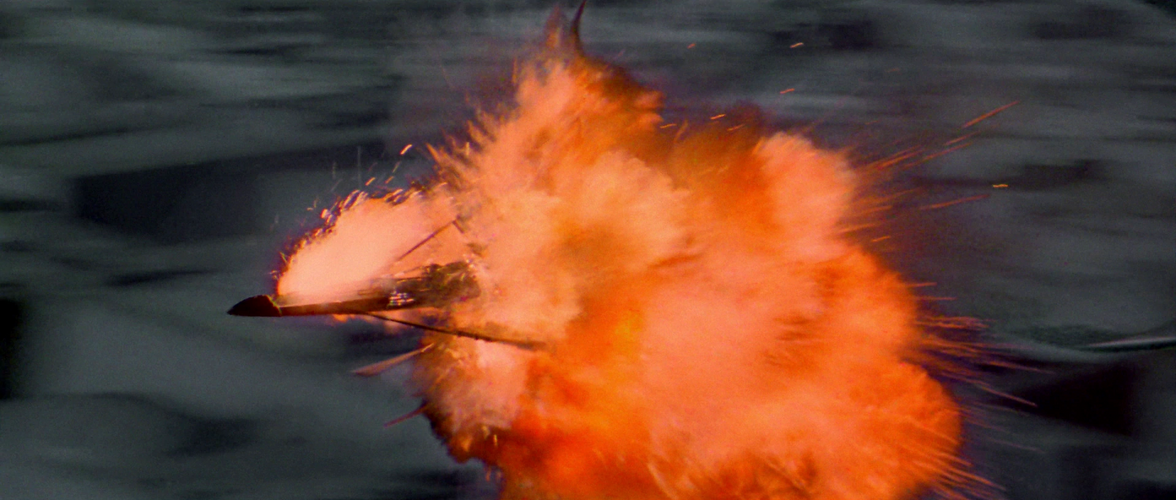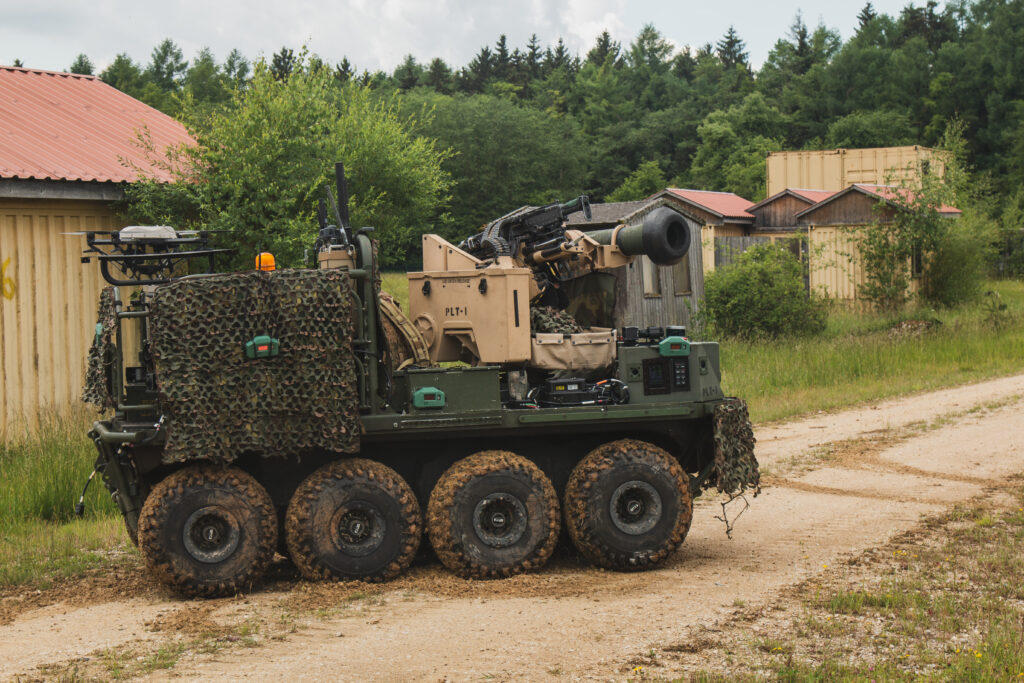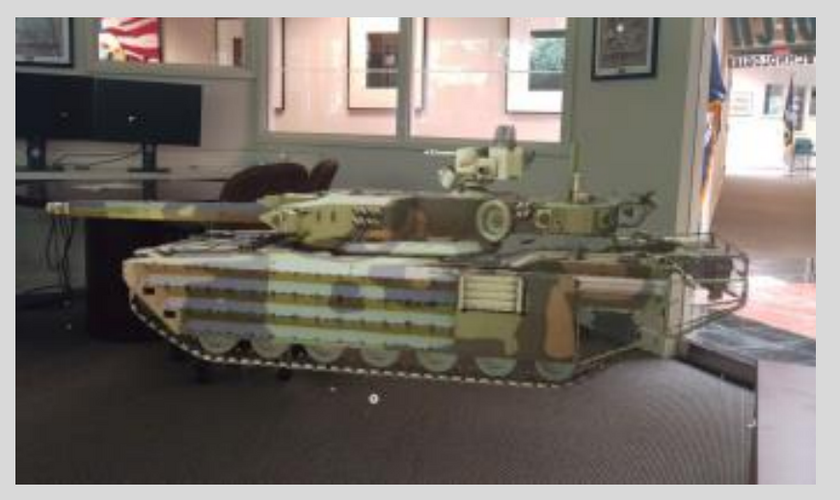The goal of the technical development is to invalidate the force structure of the enemy wholesale, regardless of tactics. The whole effort in "Revolution in Military Affairs" and Assault Breaker was about technological means of defeating soviet mechanized forces regardless of the tactics employed by soviets.
At the root of it, tanks defeat the thing that defeats infantry, which defeat the thing that defeats the tank, which protects the thing that kills the infantry, which protects the thing that kills the tank. It's less esoteric than you imply and much more akin to rock-paper-scissors.
That is, tanks kill machine guns by being bulletproof field guns that follow the infantry, and the infantry defeat the field gun by being sneaky lads with sharp eyes who can spot a gun crew waddling into position, and take the gun under fire with rifles to close with grenades and kill crew, before the field gun can kill the tank.
Where the Russians have had adequate infantry, they fight like normal in close terrain: infantry screen, machine guns are spotted through reconnaissance by (enemy) fire, the (most likely) anti-tank positions are suppressed by 12.7mm MGs and 30mm AGS, and the tanks roll up to demolish the machine gun.
massive preparatory bombardment of likely positions with heavy artillery to smash and demolish ATGW positions followed up with mechanical troops. The troop shock and fire shock of the combination of the artillery, which dazes ATGW gunners, and the subsequent assault by mechanical troops, tends to force the ATGW teams back to retreat or they die attempting to re-man their positions.
1930s conceptions of tactics...it just doesn't work anymore nearly a CENTURY down the line.
Field guns in defensive positions never were generally defeated by infantry, there are gun shields and is positioned out of reach of small arms, with infantry ahead to protect it as guns have longer range than small arms. Such guns were defeated by artillery or overwhelmed by high concentration of armor. The classical 1940s concept of warfare had artillery defeat large field guns that can not be dug in or moved easily. Tanks defeat machineguns and on top of general firepower application. Infantry defeat man portable anti-tank weapons like panzerfausts and spot low visibility threats. This tactics works up to early ATGM eras.
In the world assault breaker, all the flaws of previous generation of anti-tank defenses is answered. This is on top of the fact that defenses work when it manages to execute its combat plan as opposed to the attacker's.
1. Infantry screens are simple to defeat. Simply drop artillery on them. We'll all seen videos of armored columns bracketed by artillery. Now, YOU dismount and stay under a barrage at walking pace, advancing a kilometer or two to clear AT weapons. Even if manpower holds up in theory, morale would not given a sufficient intensive barrage.
With WW2 communications and computation capability, it was difficult for artillery to follow with mechanized advances with fire and only the best forces were capable. The need to outpace artillery and other defenses made the armored infantry carrier important, for enabling fast close range assaults.
In the modern era, responsive defensive artillery is far more available, with capability to keep with moving targets. Long range AT forces dismounts, artillery rout dismounts, armored attack defeated.
2. Even if the infantry screen is not defeated, defending anti-tank weapons from infantry is the oldest one in the book. Long range anti-tank weapons with anti-infantry screen ahead is classical.
3. Suppression and defeat of anti-tank weapons by artillery were a well known problem, highlighted especially in yom kippur. In the modern era, multiple technical solutions are available:
- Protection of the crew via remote control, like the stugna that enables the crew to fight in hidden and dug in positions, reducing suppressive effect
- Improved ease of control up to fire and forget to greatly reduce suppressive effect
- Compact light weight weapons that can be carried into deep dugouts and setup when a barrage lifts: much reduce vulnerability to destruction compared to semi-fixed weapons
- Increased weapon range and non-LOS capability increases available firing positions by orders of magnitude and can outrange opponent artillery. Weapons like Brimstone, Spike, Switchblade, and Bonus gets up to 40+ km range and can not be neutralized by artillery. It should be noted that linear increase in range result in exponential increase in dumb artillery for suppression and quickly becomes impossible.
- Vehicle mounted weapons avoids artillery by being harder to locate, and can move into a large set of possible firing positions only after opponent armor is committed. Vehicles can also be armored to resist artillery. Large numbers of artillery resistant ATGM carriers in the form of IFV is common that is quite suited for the role.
4. Defeat of anti-tank weapons by tank fires was a problem, especially when tanks are massed. Non-line of sight weapons are immune to direct fire tank force becomes the go to option. Outranging tanks is also effective, with attack helicopters and elevated masted ATGM launchers tried on top of large heavy missiles.
5. The threat of maneuver warfare is operational, not tactical, with tanks breaking through and overruning rear areas. This is dealt with with even more mobile blocking and counterattacking reserves, from attack helicopters, light ATGM vehicles and mechanized infantry. Impairing the mobility of tank forces was also done, with rapid mine laying capability combined with range projection of artillery. Long range anti-tank capability also enables rapid shift in fires, and even a "low-tech" force like Ukraine is supplied with ground launched brimstones and sensor fused artillery that can rapidly focus fires by 40km and defeat breakthroughs fast.
Ultimately AT weapons evolving from 3m range explosive charges, 30m panzerfaust, 300m RPG, 3000m ATGM, to 30,000m NLOS missile is significant.
and then there is 100km AT weapons on the sides, with integration of terminal seekers and battle networks to next gen rocket, ramjet and low cost turbojet ammo. The question when will propulsion technology improve to the point of cost effectively outranging the fueled range of tanks. Don't need to fight tank-like force when you can kill refueling points easily.
This is all basic Lanchesterian stuff that people discovered in like the 1930's. Tanks were never "dominant" or whatever, and the Kaiser's stormtroopers were blowing them up with field guns and satchel charges in 1917, so I'm not sure why you think that lol.
Killing tanks is not hard
Killing tanks can be very difficult in other eras. A single KV-1 or a Tiger could hold a entire division for hours, requiring things like manhandling a 88mm gun into range or low probability unguided air/artillery hit to clear out without absurd losses. Before missiles or advanced artillery capabilities, the only way to get rid of a heavy tank on the defense in a hurry is more tanks of good quality. Golan heights was another case where a tactically inferior, large force attacking into tanks and getting shattered. Prepared, concealed hull down positions with safe routes to reposition combined with resistant front turret armor were hard to beat.
Tanks fighting tanks occurs often enough and is extremely common in major wars where lines of sight are large, because tanks are modern cavalrymen and conventional cavalry action is possible when lines of sight are broad and open. Cavalry were historically powerful shock troops and this remains true today. The tank can defend itself by simply shooting anything that moves next to it if it can see several miles distant, so long as it can further than its gun can shoot it is perfectly safe. Desert Storm literally proved that mass cavalry action is viable in open terrain actions and remains so today.
The Toyota war shows that effective weapons range is more important than ineffective armor or ammo count in open terrain fights. Desert Storm showed this again, with Bradley defeating Iraqi armor handily when having very poor armor and small ammo load. In open terrain combat, long range sensors and effective long range weapons is more important than anything else, and in this era it means masted/drone sensors with missiles.
The primary value of armor is in surviving small weapons, like those used by infantry (classical case: machine gun) and area of effect weapons like artillery. Armor is generally not effective against vehicle anti-tank weapons fielded by opponent that actually upgrades their weapons to keep up with the arms race.
This is not especially surprising if one look at the history of cruiser and infantry/heavy tanks. A cruiser tank is fairly comfortable in open terrain and does not require good armor to be effective, though good AT capability is still needed. For combat in complex terrain, heavy armor is favored, just look at the desired weapon/armor combo for Strumtigers and AVREs.
The current generation of MBTs are heavy tanks with huge engines thrown in (and perhaps even gun launched ATGM for range) and proclaimed to be mobile but ultimately uneconomical for classical cruiser-tank style combat because it is carrying so much mass that helps very little with the mission.
tl;dr Tanks have plenty of armor it's just weakly distributed for close combat, because most tanks were designed with open terrain in mind and avoiding cities, because armies in the 80's were poorly trained for the future (i.e. now) and had soundly forgotten all the lessons of WW2 by that time i.e. tanks are a vital and ineffable part of the combined arms team in all terrains. Less armor on the front, more on the sides and top, and it ends up looking like an SPz Puma with a 5" gun I guess is "optimal" or whatever.
MBTs are designed for anti-tank combat and the logic of arms race results in specialization. Tanks now work under all-or-nothing armor scheme as balanced schemes are ineffective against tanks (but all schemes are ineffective against tanks that gets upgraded to keep up the arms race). The advantages of front turret immunity against shell fire had be highly valuable in pre-missile warfare.
Other armored vehicles not implicitly focused on anti-tank combat have far more balanced armor distribution.
Virtually every military on the planet disagrees with you. Show me an MBT that loses the gun in favor of a box of missiles. The MBT isn't going anywhere. It may ADD missiles to it's magazine (that's hardly a ground-breaking idea as gun-launched missiles have been around forever) but the heavily armored vehicle with a main gun is here to stay.
Any vehicle that is fitted with a big box of missiles is pretty much by DEFINITION not a tank. There are a lot of vehicles with box of missile on top, but normally one would not fit a gun-dueling armor scheme when it is fitted with missiles because there is no synergy and makes no sense, unless you are the north koreans that doesn't want to invest in new full vehicle designs.
Heavily armored vehicle with main gun would likely stay, but it would not be for open space maneuvers that favors weapons range above all. In tight terrain against a lot of lighter forces, armor and gun is useful. The original role of the tank is dealing with infantry across horrible terrain of no-man's land, and it is just returning to that.
There is a lot of video footage of tanks in cities from Syrian, Israeli and Iraqi conflicts. The tanks do get lost, but all lighter armored vehicles would do far worst against mines, VBIEDs, and small arms spam all over the place. The direct fire gun is also a better weapon at demolishing endless building in a urban area and immediate, low cost high volume fire cuts down infantry casualties. Even the sheer mass of tanks, with a dozen blade is helpful. The logical progression is unmanned tanks with weapons the is more optimized for close combat (lower velocity to reduce blast disrupting friendly infantry action, higher elevation and depression, and so on) like urban warfare heavy tanks of the old.
Just imagine the joke that is using ATGM jeeps in a urban warfare environment....




